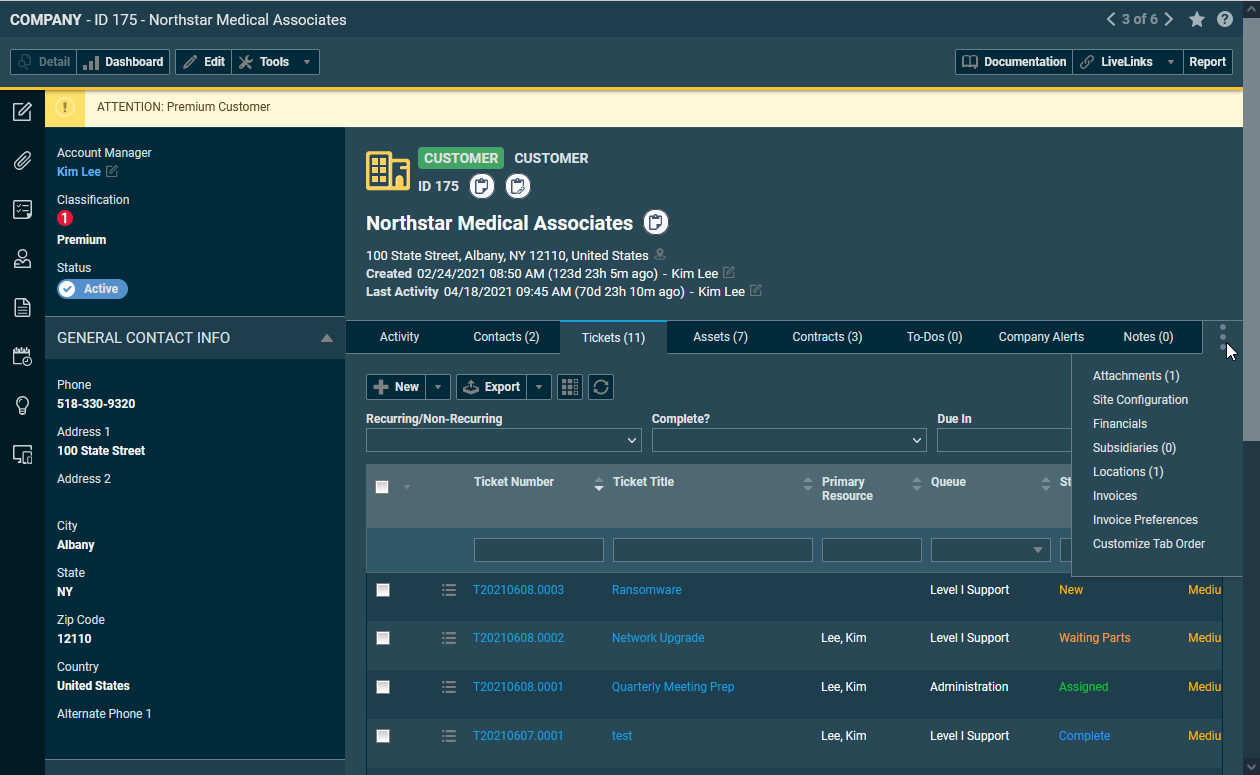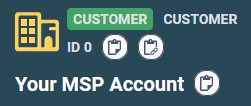About organizations
The organization plays a central role in Autotask. Contacts, tickets, devices, billing contracts - none of them exist on their own. All data in Autotask ultimately ties back to an organization. This reflects the fact that you do business with organizations (vendors, customers, partners), whereas the people at these organizations may come and go.
The Organization page illustrates the fact that everything comes together here. In addition to the fields of the organization entity (address, phone number, tax information...), you will find there everything else that relates back to the organization. The accessory tabs are essentially built-in search tables for all organization-related information.
Even your own organization must be in your Autotask instance as what we call the local organization (it has the organization ID 0).
This organization has special properties, so make sure you don't give the number 0 to another organization!
Organization types and organization categories
The other organizations in your Autotask instance relate to your local organization in different ways. The most important ones are:
- Customers buy goods and services from you.
- Vendors sell goods and services to you.
- Partners can be VARs or outsourcing partners.
Your Autotask instance comes pre-configured with a separate organization category for each type. Categories control which fields and options you see on the Organization page.
Creating organizations
You can add organizations manually, or import them in bulk.
- To manually add an organization, select Create > CRM > Organization. Refer to How to add a new organization.
- To learn about importing, refer to Importing or updating data



